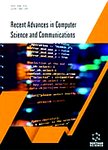版权所有:内蒙古大学图书馆 技术提供:维普资讯• 智图
内蒙古自治区呼和浩特市赛罕区大学西街235号 邮编: 010021

作者机构:Department of Computer Science & Engineering I.K. Gujral Punjab Technical University Kapurthala India Department of Computer Application Guru Nanak Institute of Management and Technology Ludhiana India
出 版 物:《Recent Advances in Computer Science and Communications》 (Recent Advances in Computer Science and Communications)
年 卷 期:2021年第14卷第1期
页 面:62-70页
核心收录:
基 金:The author like to thank the MDE LAB to provide data sets available online. Also thanks to the office on the women’s health national institute of health American cancer society and international agency for research on cancer to provide facts on cervical cancer which motivates authors to do the research work
主 题:Cells
摘 要:Background: Early detection of cervical cancer may give life to women all over the world. Pap-smear test and Human papillomavirus test are techniques used for the detection and pre-vention of cervical cancer. Objective: In this paper, pap-smear images are analysed and cells are classified using stacked auto-encoder based deep neural network. Pap-smear cells are classified into 2 classes and 4 classes. Two-class classification includes classification of cells in normal and abnormal cells while four-class classification includes classification of cells in normal cells, mild dysplastic cells, moderate dysplastic cells and severe dysplastic cells. Methods: The features are extracted by deep neural networks based on their architecture. Proposed deep neural networks consist of three stacked auto encoders with hidden sizes 512, 256 and 128, respectively. Softmax used as the outer layer for the classification of pap smear cells. Results: Average accuracy achieved for 2-class classification among normal and abnormal cells is 98.2% while for 4-class classification among normal, mild, moderate and severe dysplastic cells is 93.8% respectively. Conclusion: The proposed approach avoids image segmentation and feature extraction applied by previous works. This study highlights deep learning as an important tool for cells classification of pap-smear images. The accuracy of the proposed method may vary with the different combination of hidden size and number of autoencoders. © 2021 Bentham Science Publishers.